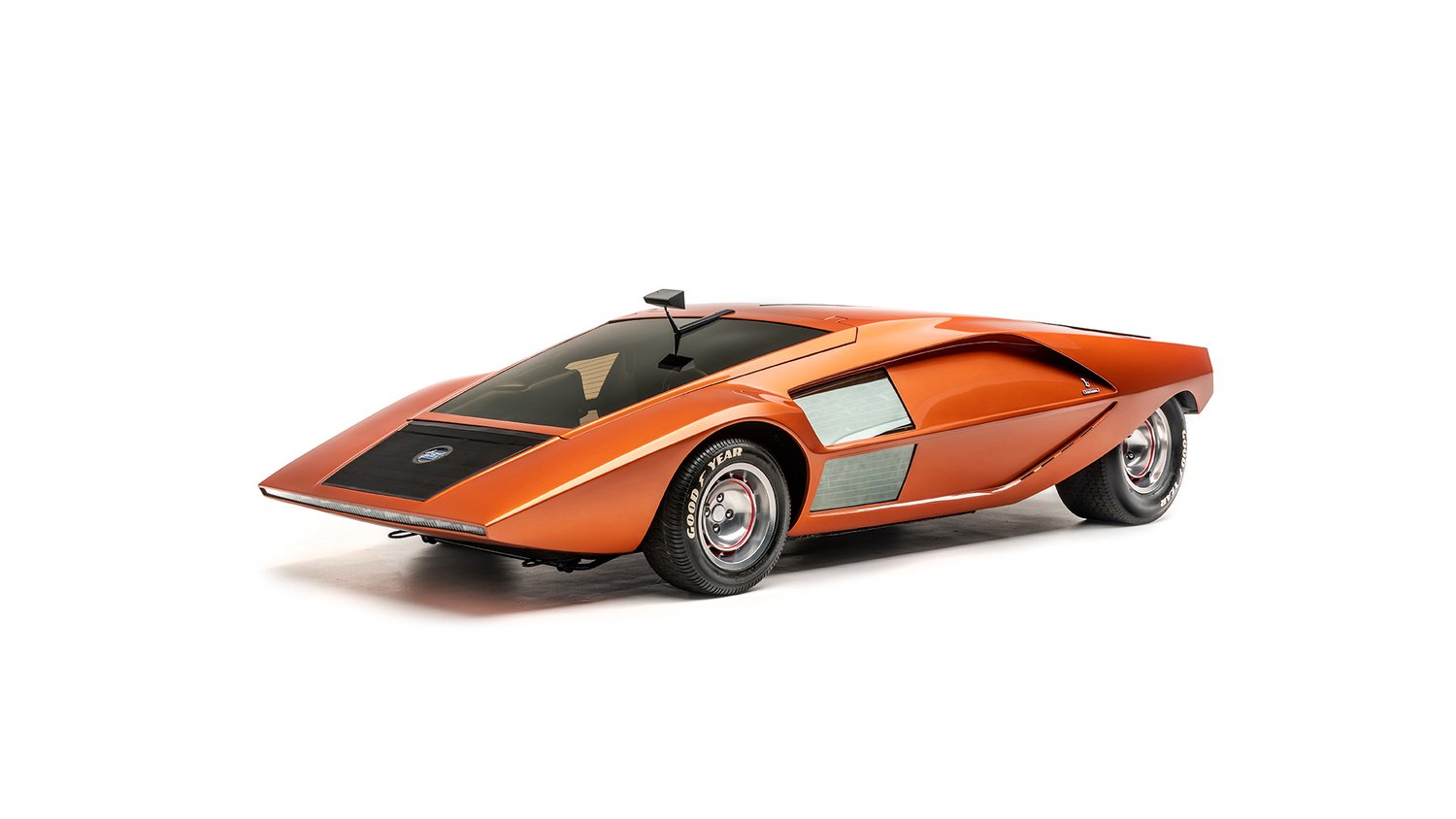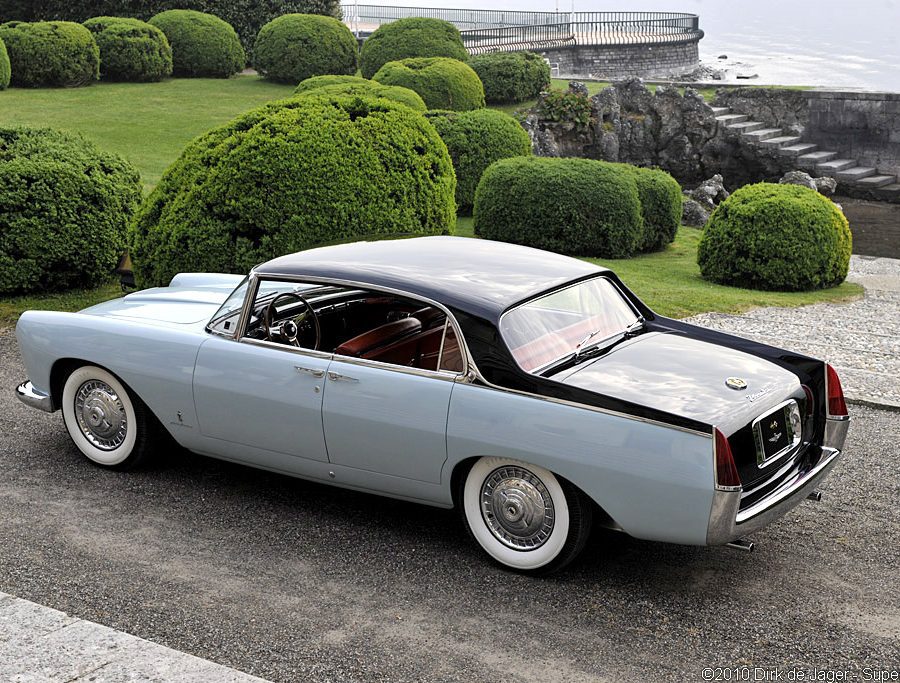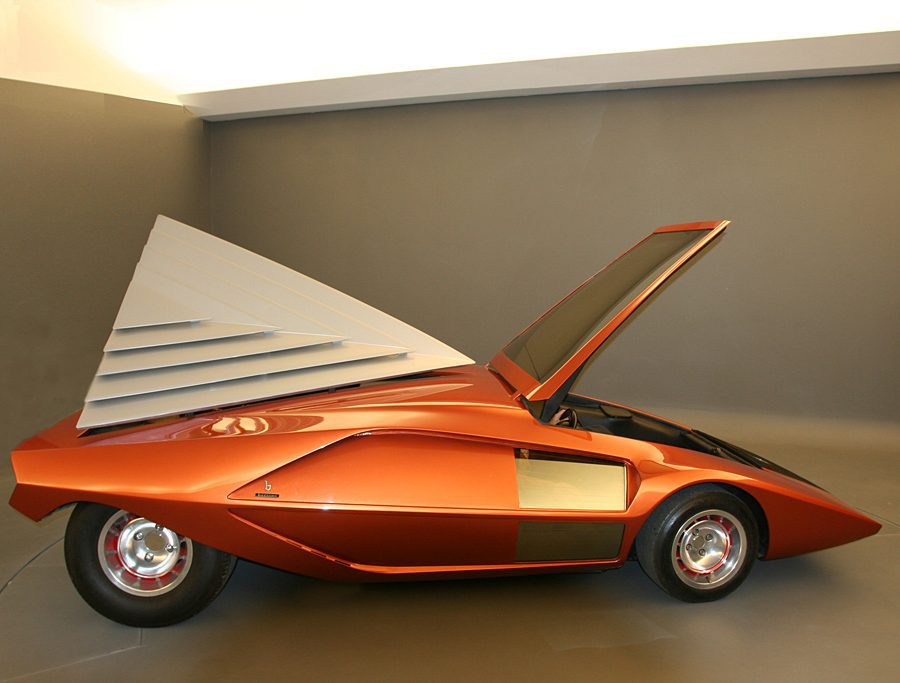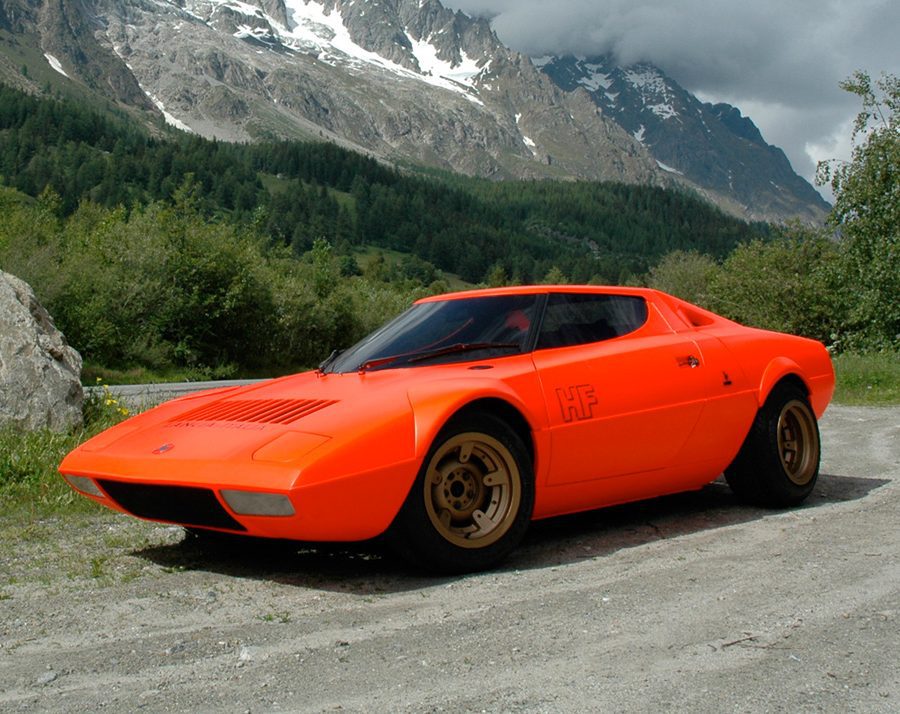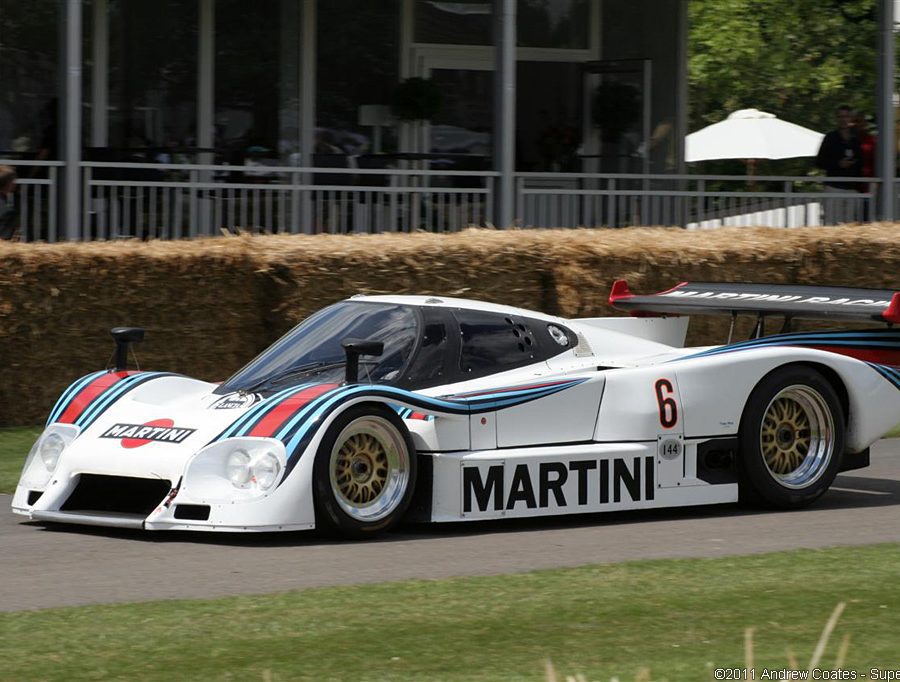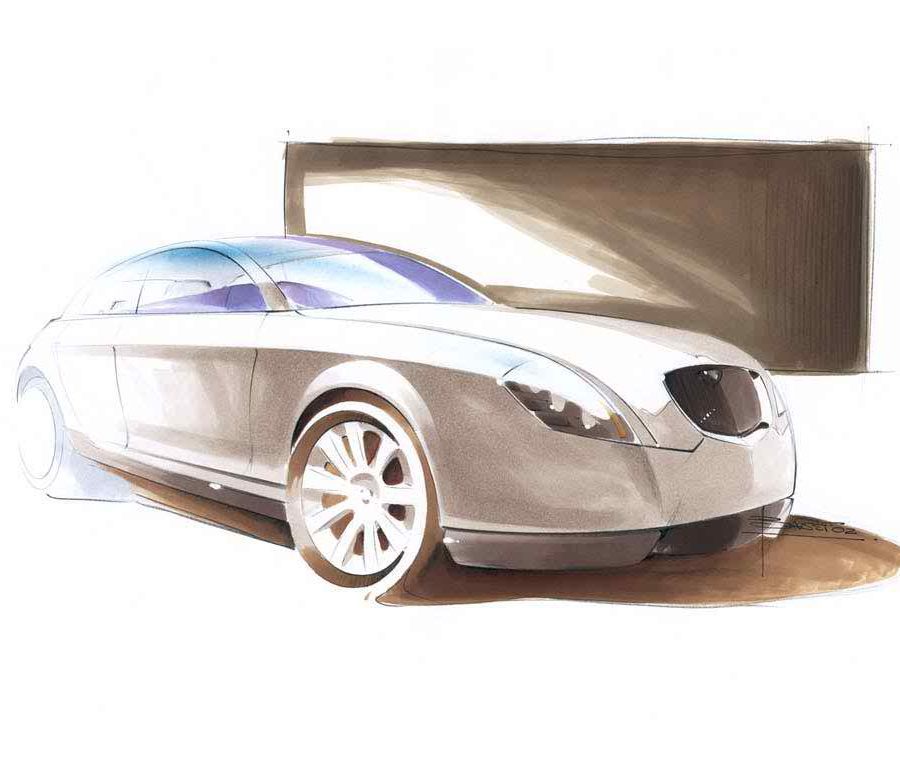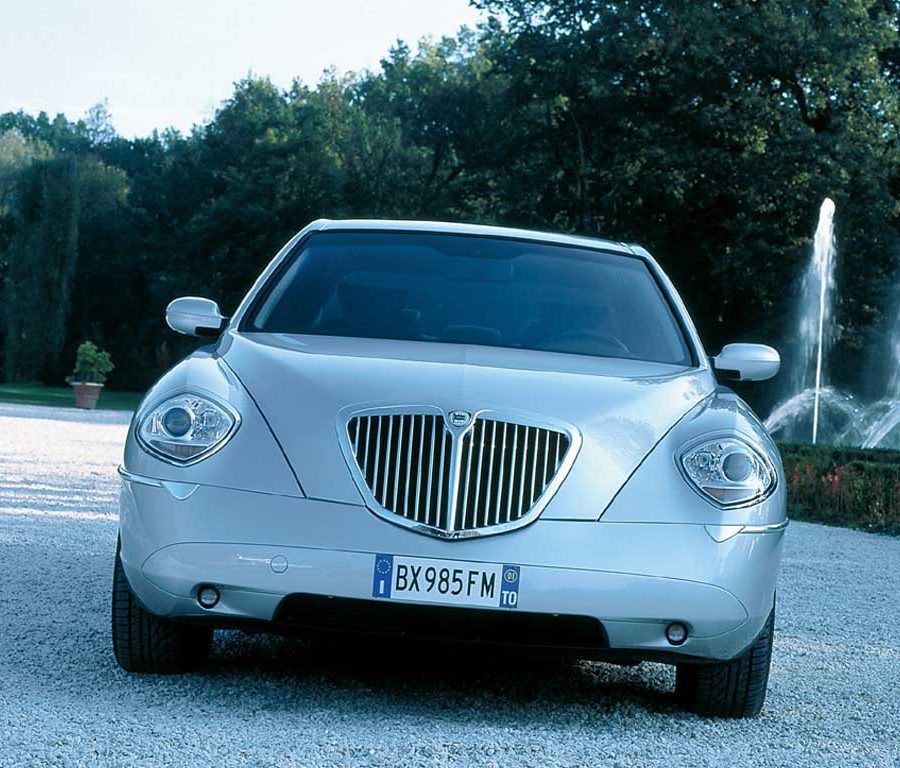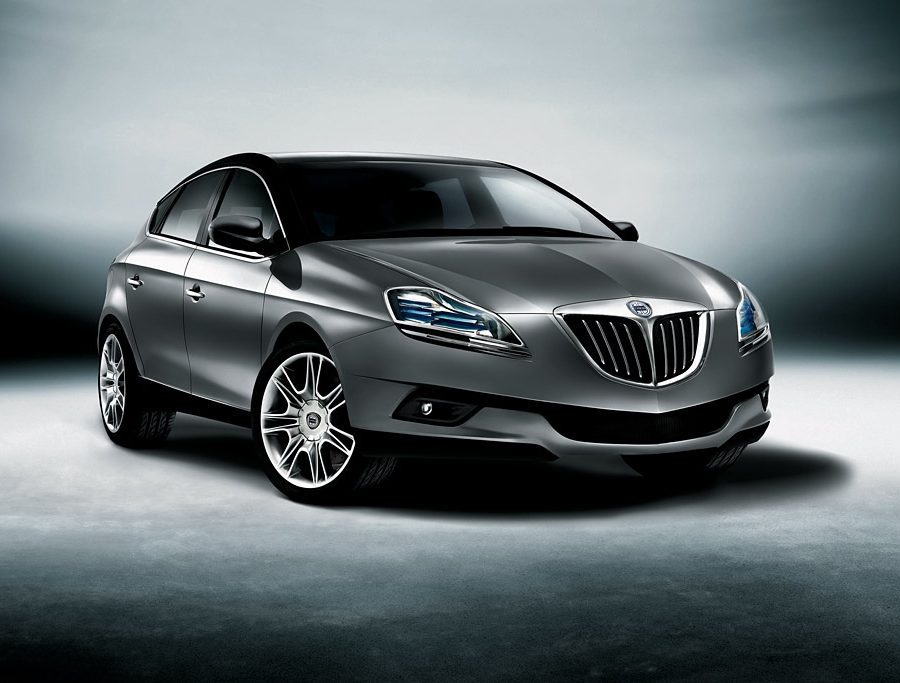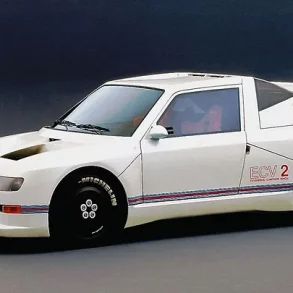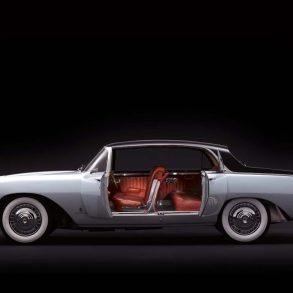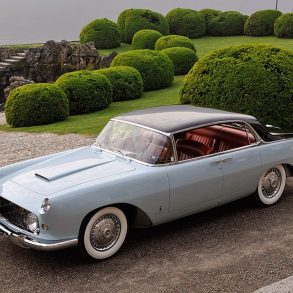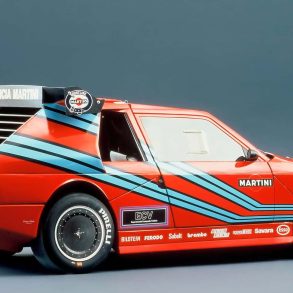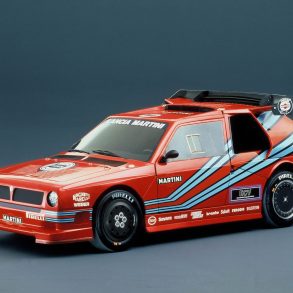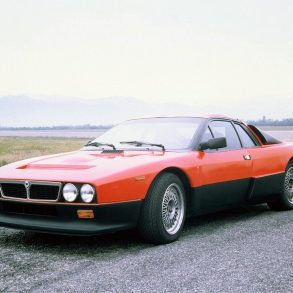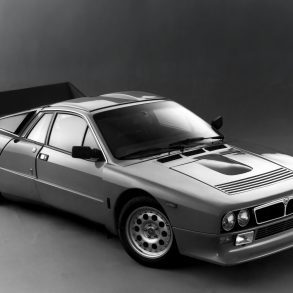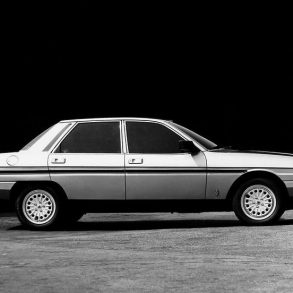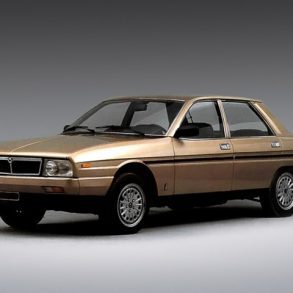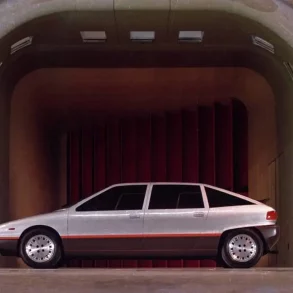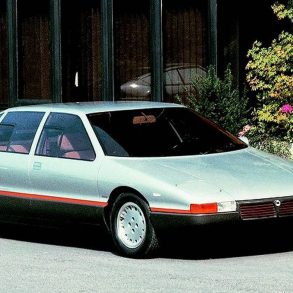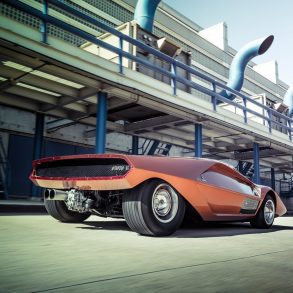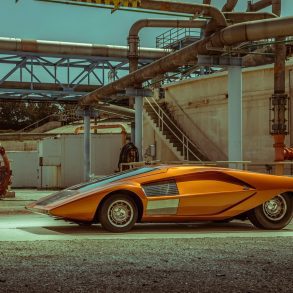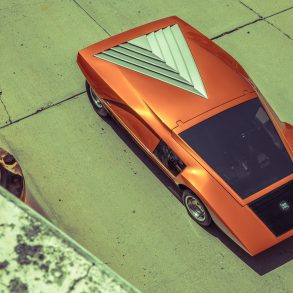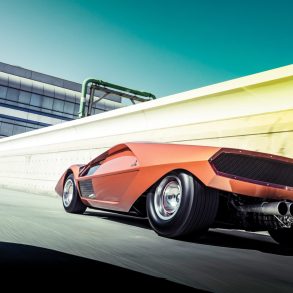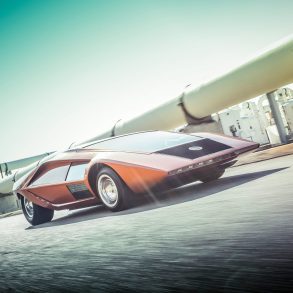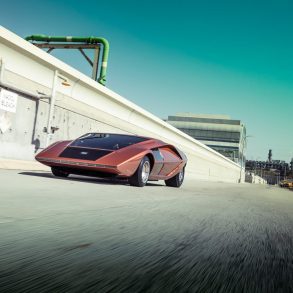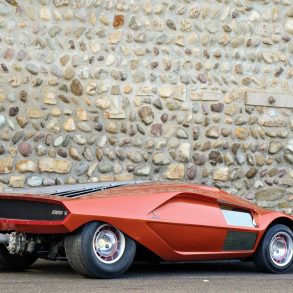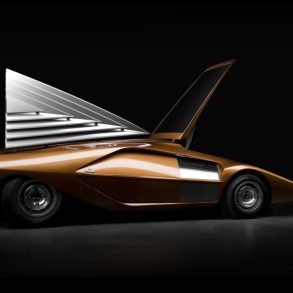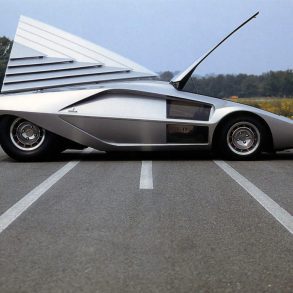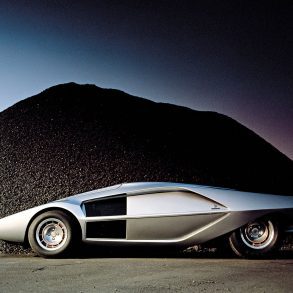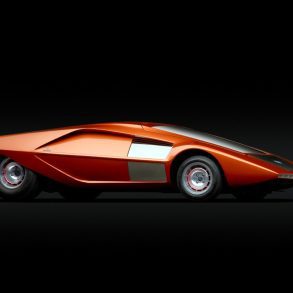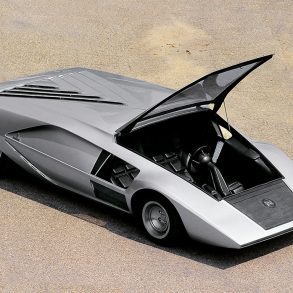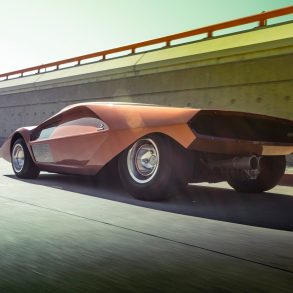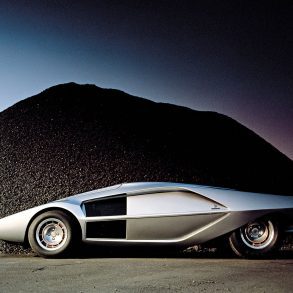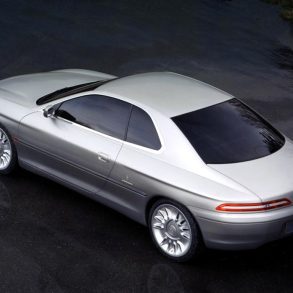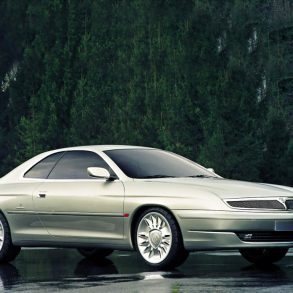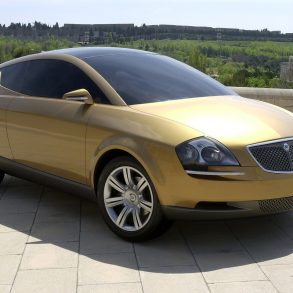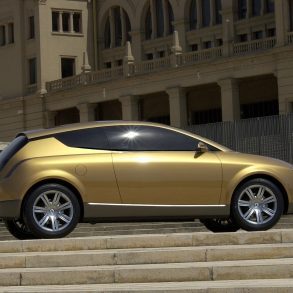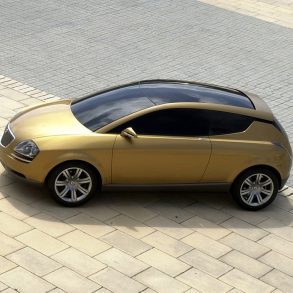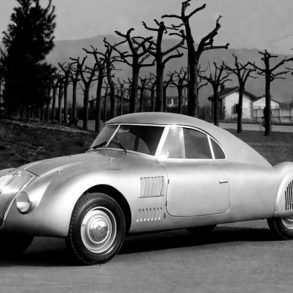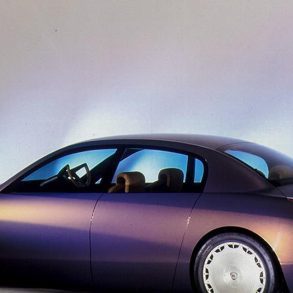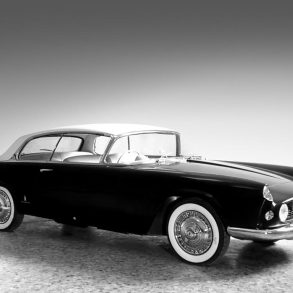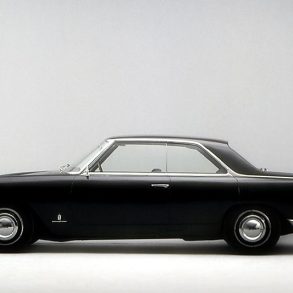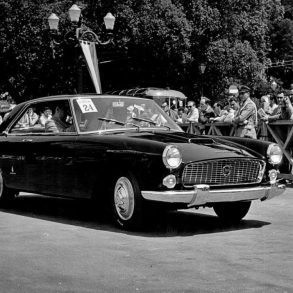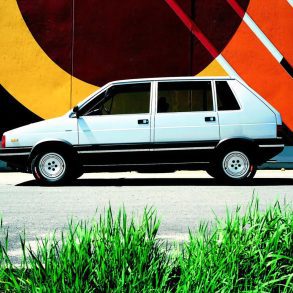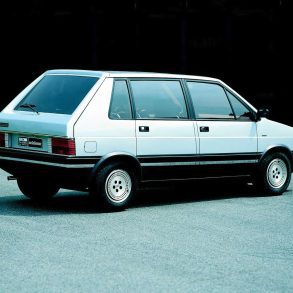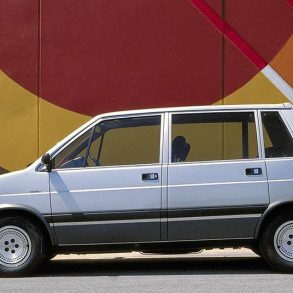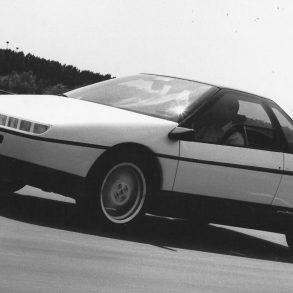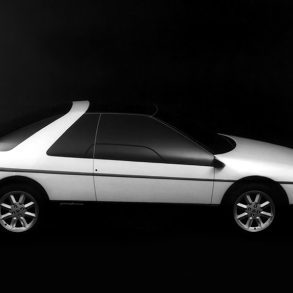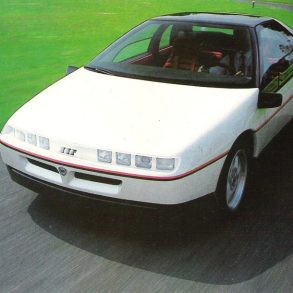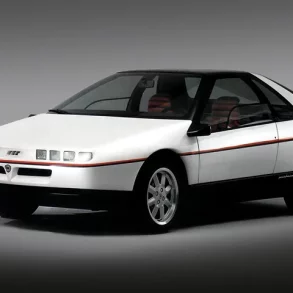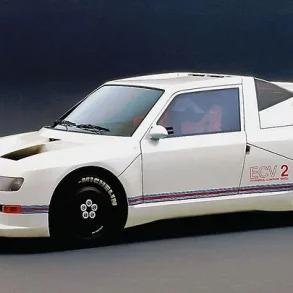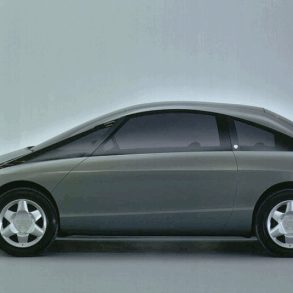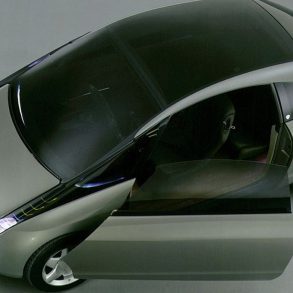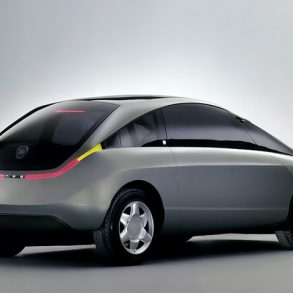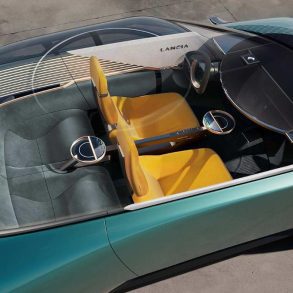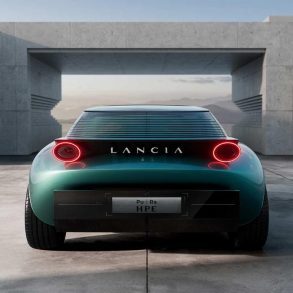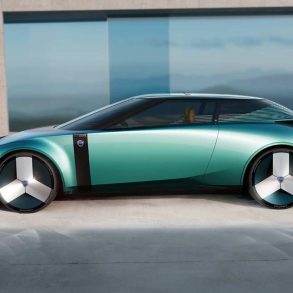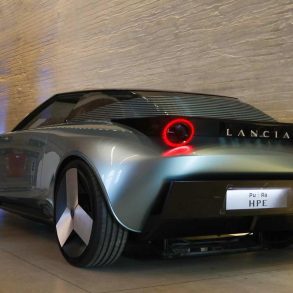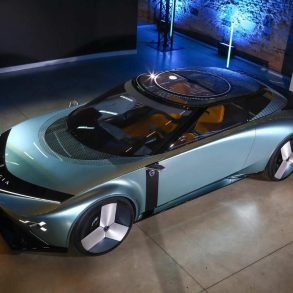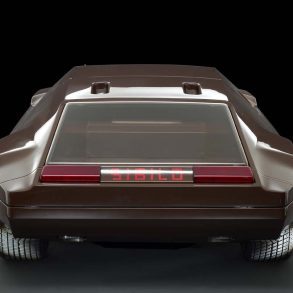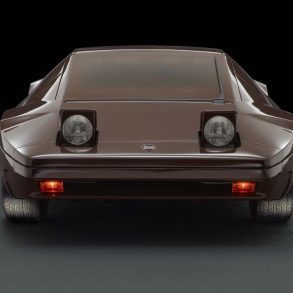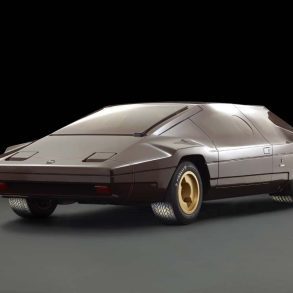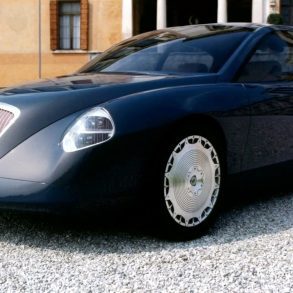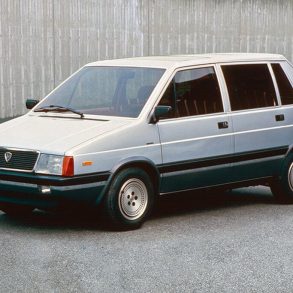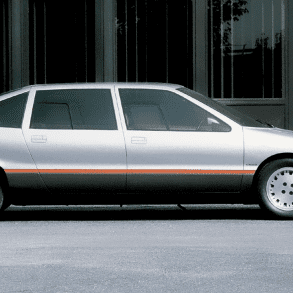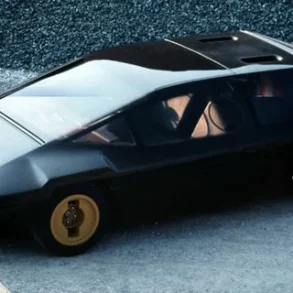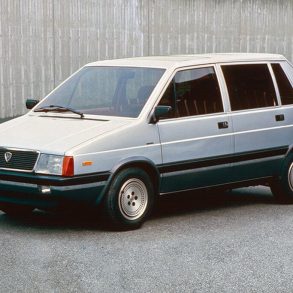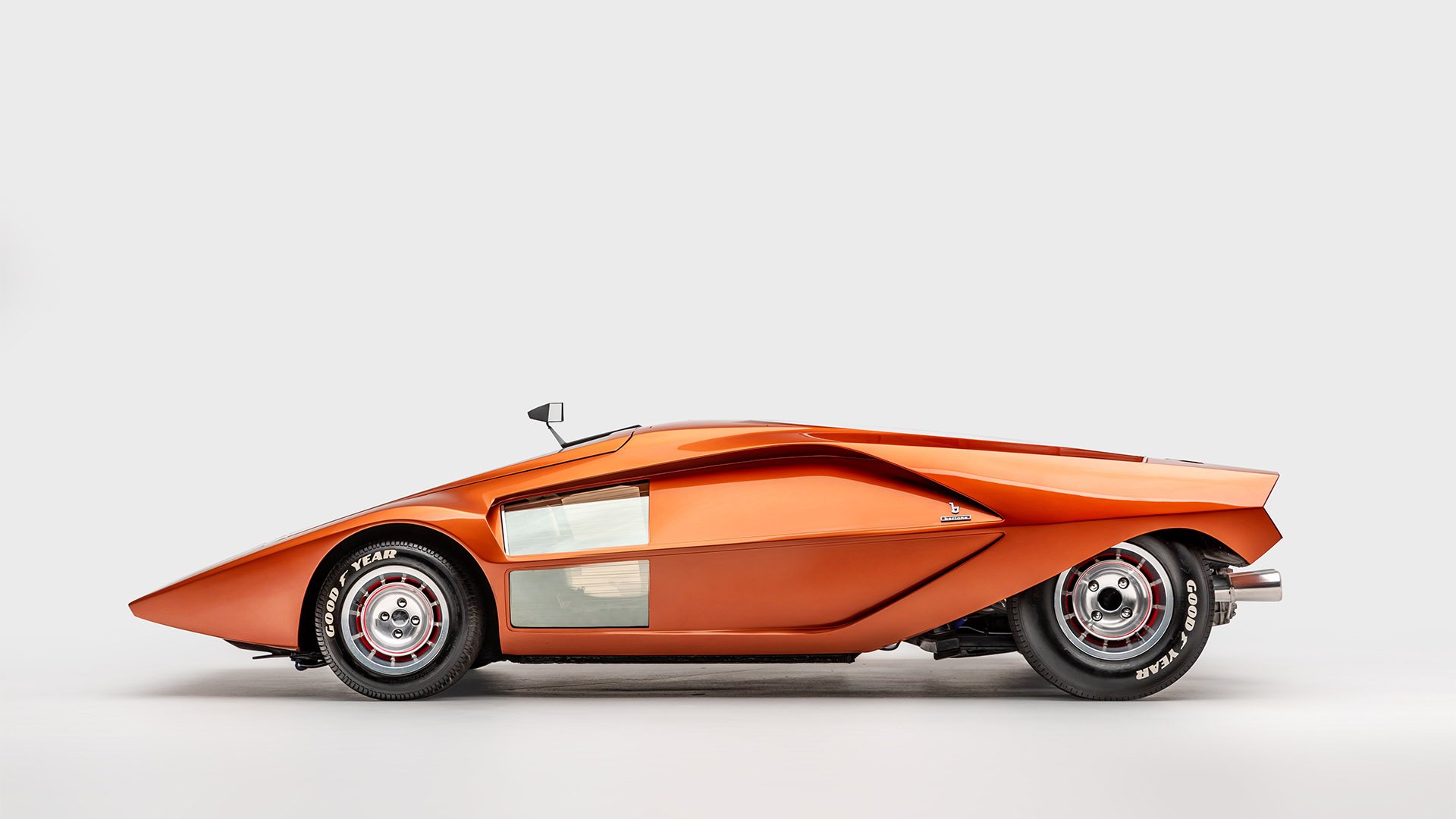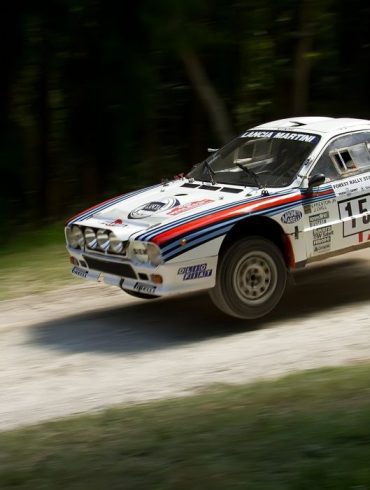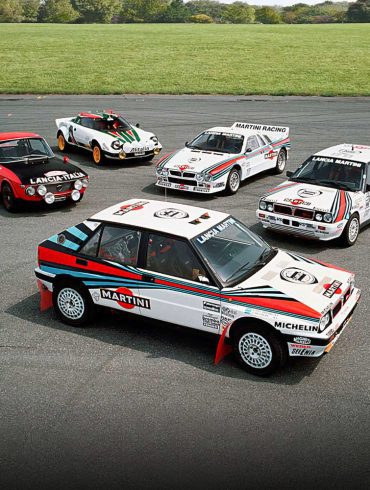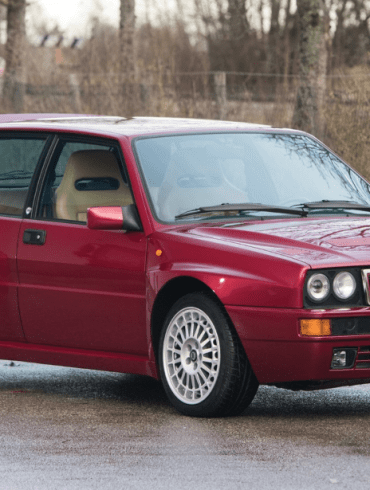1955 Lancia Aurelia B56 ‘Florida’ In 1955, Pininfarina and Lancia were aiming squarely at the American market with this Aurelia B56 ‘Florida’ showcar. With its unique size, shape and demeanor, the Florida was unlike anything Pinin Farina had made previously. At the time, it was the only Lancia powered by...
Lancia Concept Cars
From radical geometric wedges to luxurious visions of the future, Lancia concept cars have consistently challenged the boundaries of automotive design. Their creations embody a daring spirit of innovation and experimentation, offering glimpses of potential production models while also showcasing pure flights of automotive fantasy. Join us on a thrilling journey as we explore the most audacious Lancia concepts.
Full Model List / Models In-Depth / Image Gallery / Best Lancia Concepts
Every Lancia Concept Car
This is a list of concepts and prototype vehicles created by Lancia that never reached full production.
Lancia Aprilia Aerodinamica (1937)
Lancia Aprilia Cabriolet (1947)
Lancia Ardea (1947)
Lancia Ardea Panoramica (1949)
Lancia PF 200 (1952)
Lancia Florida I (1955)
Nardi Raggio Azzurro I (1955)
Lancia Appia Cammello (1956)
Lancia Florida II (1957)
Nardi Raggio Azzurro II (1958)
Lancia Flaminia Loraymo (1960)
Lancia Flaminia Spider Amalfi (1962)
Lancia Flaminia Coupé Speciale (1963)
Lancia Fulvia Sport Spider (1968)
Lancia Flavia Super Sport (1969)
Lancia Marica (1969)
Lancia Fulvia Berlinetta Competizione (1969)
Lancia Stratos Zero (1970)
Lancia Dunja (1971)
Lancia Stratos HF Prototipo (1971)
Lancia Mizar (1974)
Lancia Megagamma (1978)
Lancia Gamma Spider (1978)
Lancia Sibilo (1978)
Lancia Delta (1978)
Lancia Spider (1979)
Lancia Gamma Scala (1980)
Lancia Medusa (1980)
Lancia BCDE (1980)
Lancia A 112 (1981)
Lancia Gamma Olgiata (1982)
Italdesign Orca (1982)
Lancia Together (1984)
Lancia ECV (1986)
Lancia ECV2 (1988)
Lancia HIT (1988)
Lancia Magia (1992)
Lancia Thema Coupé (1993)
Lancia Kayak (1995)
Lancia Ionos (1997)
Lancia Dialogos (1998)
Lancia Nea (2000)
Stola S81 Stratos (2000)
Lancia Granturismo (2002)
Lancia Granturismo Stilnovo (2003)
Lancia Fulvia Coupé (2003)
Lancia Thesis Stola S85 (2004)
Lancia Kandahar (2005)
Lancia Ypsilon Sport (2005)
Lancia Haizea (2006)
Lancia Delta HPE Concept (2006)
Lancia Flavia Concept (2011)
Lancia Pu+Ra HPE (2023)
Best Lancia Concept Cars Ever Created
We Pick The Five Greatest Lancia Concepts
Lancia has long been celebrated for its significant contributions to the automotive world, not only through its storied production models but also through its groundbreaking concept vehicles. From the revolutionary Lancia Stratos Zero of 1970, with its futuristic design and mid-engine layout, to the classically inspired Lancia Fulvia Concept of 2003, Lancia’s concept cars have continually redefined the boundaries of automotive design and engineering. Exploring Lancia’s concept cars offers more than a glimpse into the brand’s creative prowess; it provides insights into how Lancia has influenced broader automotive trends and responded to changing cultural and technological landscapes. Each concept car tells a story of innovation, vision, and the pursuit of automotive perfection, underscoring Lancia's enduring influence on the industry.
1. Lancia Stratos Zero (1970)
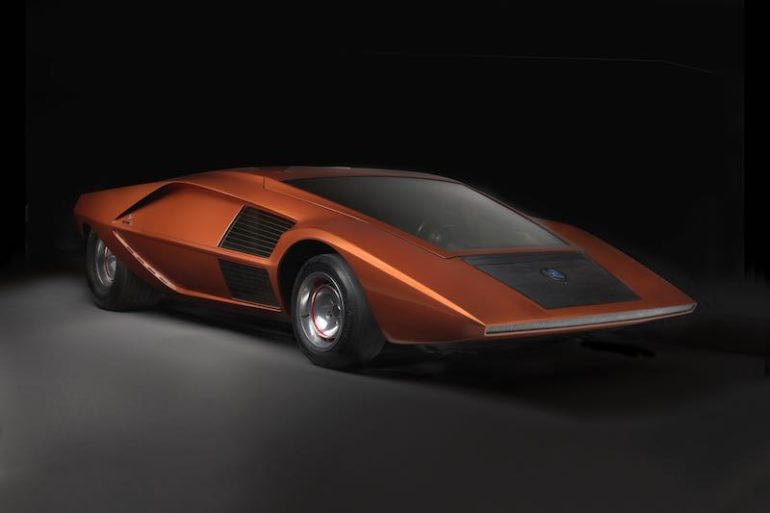 1970 Lancia Stratos HF Zero
1970 Lancia Stratos HF ZeroA radical wedge-shaped concept with a canopy door and a near-flat driving position, the Stratos Zero directly inspired the legendary production Stratos rally car.
Why Is This The Best Lancia Concept Car?
On seeing this car in the making, a Bertone employee is reputed to have exclaimed that the vehicle looked as though it had come from the stratosphere, from which the Stratos name evolved.
It was displayed to great acclaim at the 1970 Turin Motor Show. Impractical as the concept was, Lancia’s competition manager, Cesare Florio, believed that it could evolve into a rally car. In March 1971, Bertone was given approval to proceed with the prestigious project.
At that year’s Turin Show, Bertone unveiled its Stratos HF, a more practical offering that the 1970 car. It retained the vitality of the original but now possessed two conventionally located doors. It also differed from the previous year’s concept in being powered by a transversely mounted 2.4 litre V6 engine from in-house Ferrari Dino 246.
Further body refinements followed before the definitive Stratos appeared in 1974. Bertone was awarded the body contract for a vehicle that used a robust steel substructure and glass-fibre body panels.
The stratos was soon sweeping all before it and Lancia won the World Rally Championship in 1975 and 1976. To obtain homologation the Stratos also had to be offered as a road car and just 492 examples of this stubby masterpiece were build.
2. Lancia Sibilo (1978)
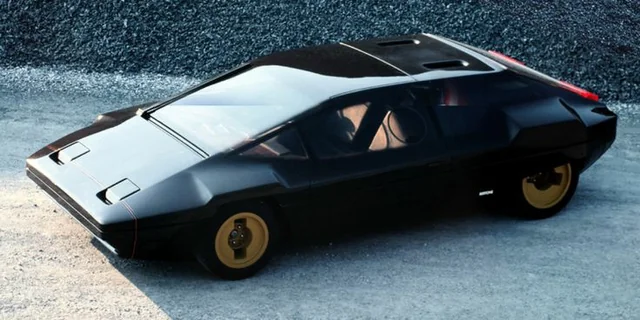
Designed by Bertone, the Sibilo resembled a space-age sports car with a huge wraparound windscreen, hidden wheels, and a joystick instead of a steering wheel.
Why Is This The Best Lancia Concept Car?
This coupé, which was designed in the Style Centre at Caprie, is a futuristic prototype for a supercar, constructed on the chassis of the Lancia Stratos. The Sibilo builds on the concept of the Stratos, taking it to stylistic extremes. It is 10 cm longer than the Stratos, but the layout of the mechanical components remains the same.
The car presents original exterior graphics which visually blend the glazing seamlessly with the rest of the bodywork. In Bertone’s view window surfaces were an important feature and a rule for creating the aesthetics of a car. The total window surface area, the shape of the windows, and their blending with the bodywork, determine the car’s personality but also considerably condition the designer’s creative freedom of expression.
Bertone had come up with many daring solutions regarding windows (the Marzal, Carabo, Stratos, and Navajo), and with the Sibilo he attempted to blend them in completely with the bodywork. In this way the car was given a more uniform look, forming a single sculpture as it were. The rear semi-monococque was entirely removable.
The vehicle”s steering and instrumentation was given a completely new, original touch: information is displayed digitally on a device located close to where the windscreen meets the bodywork, thus meaning less movement for the eye. The steering wheel grip was designed starting out from a plaster cast of a hand, and when you hold the Sibilo steering wheel the sensation is that of a uniform and relaxed contact with palm.
Presented at the 1978 Turin Motor Show, the Lancia Sibilo is still an important example of a car which looks to the future.
3. Lancia ECV 2 (1988)
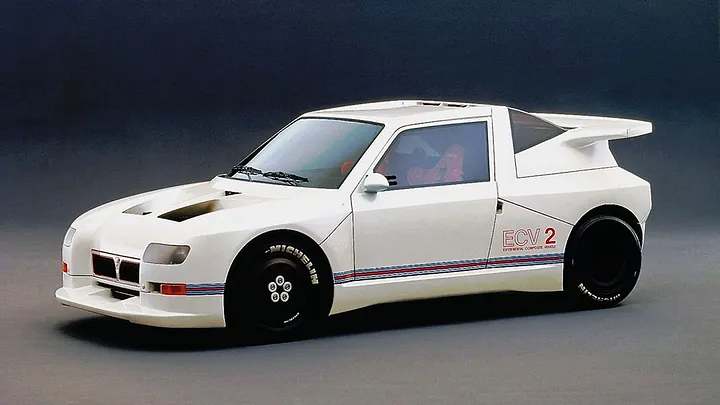
The unique Lancia ECV2 prototype represents a tantalizing glimpse into what could have been the evolution of rallies if the infamous Group B cars had been allowed to continue racing.
Why Is This The Best Lancia Concept Car?
Unveiled in 1988, the ECV 2 was a prototype developed as part of Lancia's exploration into the next generation of rally cars following the end of the Group B era. The ECV 2 was designed to be an evolution of its predecessor, the ECV 1, which was itself an innovative project aimed at exploring advanced technologies for rally racing. The ECV 2 continued this theme but focused heavily on materials science, particularly through the use of composites.
One of the most notable features of the ECV 2 was its extensive use of composite materials, including carbon fiber and Kevlar. This not only reduced the overall weight of the vehicle but also improved its strength and rigidity. The car's chassis was built with these materials, offering a lightweight yet durable framework, which was essential for the rigors of rally racing.
Under the hood, the Lancia ECV 2 was equipped with a sophisticated powertrain that featured a 1.8-liter four-cylinder engine equipped with twin turbochargers. This setup was designed to deliver substantial power outputs — reports suggest figures close to 600 horsepower. The engine technology included an innovative "Triflux" valve system, which allowed for optimal airflow through the engine, enhancing its efficiency and power.
The ECV 2 was also designed with advanced aerodynamics in mind. The bodywork included adjustable aerodynamic components that could be tuned to maximize performance on different stages of a rally. This adaptability was a key focus, intending to provide superior handling and stability at high speeds.
The Lancia ECV 2, like many experimental vehicles, never competed in official rally events. The abrupt end of the Group B and Group S categories by the FIA, following several high-profile accidents, meant that the ECV 2 and similar prototypes were left without a competitive venue.
4. Lancia Megagamma (1978)
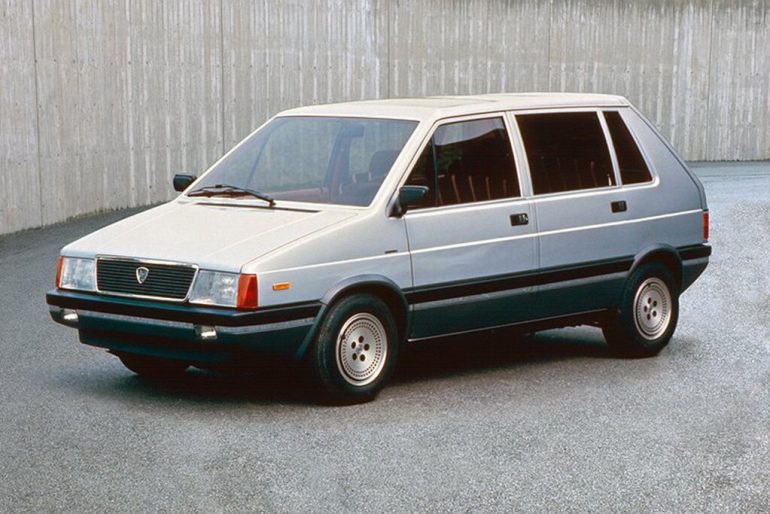
A luxurious and spacious minivan concept far ahead of its time, featuring swiveling seats, a built-in TV, and huge windows for panoramic views.
Why Is This The Best Lancia Concept Car?
In 1978, the automotive world witnessed the unveiling of a concept car that would quietly set the stage for a revolution in family transportation—the Lancia Megagamma. Developed by the Italian car manufacturer Lancia in collaboration with ItalDesign, under the leadership of the legendary designer Giorgetto Giugiaro, the Megagamma was more than just a prototype. It was a vision of the future, showcasing ideas that would later define an entirely new vehicle category: the minivan.
At first glance, the Lancia Megagamma might not have turned heads for its beauty. Its design was boxy and utilitarian, a significant departure from the sleek and sporty lines typical of the era. However, it was this very design that made the Megagamma innovative. Its tall, box-like shape maximized interior space, offering unprecedented roominess without increasing the vehicle's footprint.
The Megagamma introduced the concept of a high, one-box design that integrated the cabin and cargo space, eliminating the traditional trunk. This allowed for a flat floor throughout the vehicle, which facilitated easier movement inside the cabin and better utilization of space. The high roof provided ample headroom, and the upright seating position offered passengers a clearer view and an easier ingress and egress, a feature particularly appreciated by older adults and those with mobility issues.
Giorgetto Giugiaro's design emphasized functionality and passenger comfort. The Megagamma featured large, sliding side doors, which would later become a hallmark of minivans. These doors provided easy access to the spacious interior, making it convenient for families, especially those with children or for loading larger items.
The vehicle's layout included versatile seating configurations, which could be easily adjusted or removed according to the user's needs. This adaptability was revolutionary, providing families with the ability to tailor the vehicle's interior for different situations, whether for carrying more passengers or increasing cargo space.
5. Lancia Dialogos (1998)
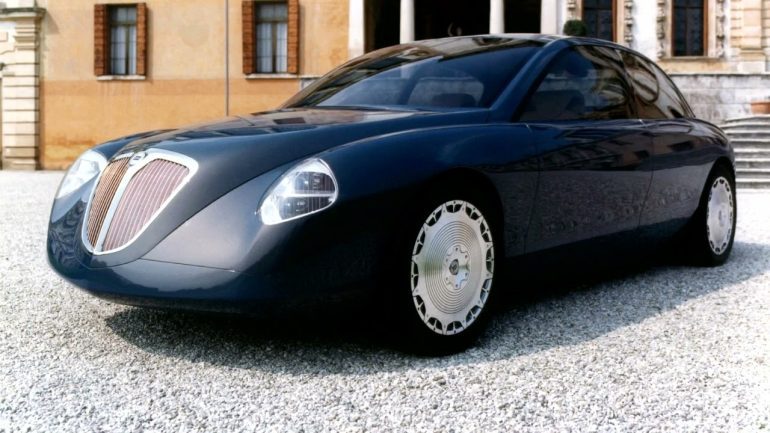
This concept explored the future of the executive sedan with a futuristic design, luxurious interior, and advanced infotainment systems.
Why Is This The Best Lancia Concept Car?
The Lancia Dialogos concept car made its debut at the Turin Motor Show in 1998, anticipating the future Thesis in its lines. At the heart of the project was the innovative concept of a "biodynamic car": a place to live, not just a vehicle to drive, a space where matter and technology offered wellbeing as well as aesthetic pleasure. The result was an interior billed as "a healthy bubble", to be inhabited while enjoying a stress-free drive. The Dialogos prototype's style reinterpreted the Lancia tradition in a more contemporary key, with a high front, long bonnet, inverted wedge profile, soft curves, rounded edges and assertive personality.
Internally the car is spacious and comfortable, providing exceptional comfort and practicality on board, also thanks to its Top Climate System: this detects external temperature, humidity and pollution conditions, and creates an ideal climate inside.
The Lancia Dialogos could rise or sink down, depending on the height of the driver, and its seats rotated and moved outwards to help passengers enter. Once occupied, the seats retracted, the doors closed automatically and the car adapted to the driver's habits: to drive on the right or left and to modify climate settings and vary the diffusion and intensity of illumination and sound. The Dialogos offered an interior with clean shapes and comfortable spaces, but could then produce screens and keyboards, mini-bar, table and document compartments on command.
Instead of the traditional dashboard and instrument display, it featured a large panel formed by three liquid crystal display monitors: one reserved to showing performance information to the driver, a second, near the passenger, dedicated to navigation and comfort, and a third in the centre showing images from the rear-view camera.


